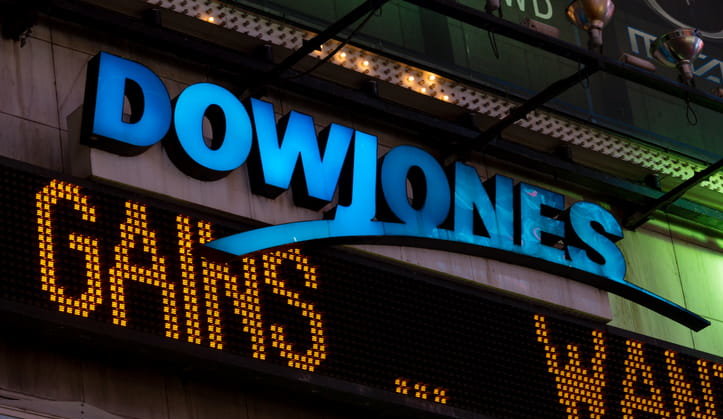How to trade CFDs on US Indices

To trade the US market via CFDs, you need to know some basic principles, including terminology, factors affecting price movement, how to practice risk management, and setting up your account to grow your CFD portfolio. In this article, we’ll sort the three main indices – DOW, NASDAQ, and S&P 500, and explain the difference between each one. We will discuss US indices with a focus on trading in general, as there is also investing and stock broking which differ in nature.
What are CFDs?
Contracts for Difference, commonly referred to as CFDs, are an agreement between you and your trading broker that requires a payment of the difference between the change in stock price. This applies to all kinds of trades, including ones on the US indices market.
Okay, but What are Indices?
Indices are the plural form of index and, in the context of financial markets and trading, they refer to the list of company stocks on a specific market. Simply said, they are a measurement of the price performance of a portfolio of stocks. The bigger the company, the larger share price and market-cap value, leading to a bigger influence of the index performance.
After learning more about indices, we can look into the US stock market, where three indices stand out – Dow Jones 30, Nasdaq 100, and S&P 500. The American stock market in 2021 has a total value of almost $50 trillion. The three largest and most-recognized US stock market indices are separated in this way to measure each section of the stock market they focus on.
Dow Jones 30/The US30 CFD
The Dow Jones 30 index was developed in 1896 by Charles Dow, founder of Dow Jones and Co. He was also Editor of The Wall Street Journal at the time. Back then access to individual company data was very limited. He was the first to compile and publish the average of 12 purely industrial stocks as an indicator of American stock market performance.

Now none of those 12 are currently in the list. The aim of the current 30 stocks is to give a clear image on the dominant sectors that help move the American economy forward. Such changes in the list of companies may occur. Such was the case for example with General Electric in 2018. The company is still in operation but is no longer a part of the index.
At the moment, some of the most notable companies that are part of the index are Apple, IBM, Boeing, Intel, Coca Cola, Nike, Johnson & Johnson, and more.
In order to trade on the Dow Jones Industrial Average, known simply as the Dow, it is important to know that it has a high degree of liquidity responding to the volatility of American markets. For this, technical analysis to benchmark support and resistance levels is considered one way to approach the situation. Unlike other major indices, the Dow is price-weighted, meaning a greater weight is given to stocks with higher share prices. To calculate it, the sum of the prices of its list of stocks is divided by the Dow Divisor. Over time, many adjustments have been made to the divisor to preserve the Dow numerical value that is affected by additions and subtractions.
Undoubtedly, the Dow is one of the most popular indices out there. Traders around the world also have the opportunity to trade it as a CFD under the name US30.
Nasdaq 100/NDX100 CFD
The Nasdaq 100 stock market index measures the value of the top 100 performers, scooped from over 3000 companies on the Nasdaq Stock Exchange. It excludes financial industry companies like those from within the asset management, investment banking, or corporate banking spaces.

The companies in this list are primarily technology-related. This makes it an index considered to give an accurate representation of the US technology sector. It would be no wonder to know then that this list consists of technology giants. Microsoft, Apple, Facebook, Amazon, Intel, and others are part of the index. Similar to the Dow, the Nasdaq also utilises a weighting system. The companies taking part of the index must report their financial performance levels on a quarterly and annual basis.
Looking into the historical movement of the Nasdaq 100 index, it launched in 1985. Opening at 250 points it gained throughout the following decade; in the 1990s, it took off as a result of the Dot com boom. Before the crash, it peaked at 5,132.52 points, and managed to recover in just 15 years. Since then, it has been growing at a steady pace; in May 2021, it was well above the 13,000 points mark. Those interested in this index can also trade it as the NDX100 CFD.
S&P 500/SPX500 CFD
The Standard & Poor’s is a division of S&P Global, a financial intelligence company that takes the 500 largest companies on the New York Stock Exchange to measure their value. S&P started in 1860 when financial analyst Henry Varnum Poor published a book titled “History of Railroads and Canals in the United States”. It provided a coverage of the financial and operational states of railroad companies in the US in a comprehensive manner. Eight years later, after creating “H.V and H.W. Poor Co.” with Henry William Poor, they published two guidebooks that were annually updated. In 1906 came the Standard Statistics Company which provided financial information on non-railroad companies. The two merged in 1941 to become Standard & Poor’s Corporation, and in 1996 they were acquired by The McGraw Companies. In 2016, the corporation was rebranded as S&P Global.

The S&P 500 index launched in 1957 and has been a leading indicator of the health of the US stock market ever since. Companies that go into the list are selected based on liquidity, market size, and industry. To calculate and ensure the index is not affected by non-economic factors, its index divisor is adjusted in the event of spinoffs, stock splits, and special dividends. CFD traders also have access to this index. They can find it under the name SPX500.
How to trade US indices?
You can start setting up your CFD portfolio by following the news on US financial markets and expanding from there. However, you will also need to create an account with a CFD broker that works with your trading strategy. Eightcap offers relevant account options that you may be interested in. You can go long or short by trading US indices via CFDs on an award-winning platform like MetaTrader 4. Additionally, to reduce and manage risk exposure, there are several conditions you can use to your advantage. Eightcap’s education program is just one of them. If you wish to give trading a try, you can start with our free demo account.

